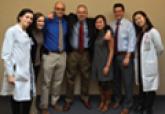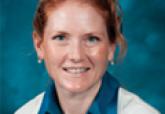Audio

Health Care Reform and the Practice of Dermatopathology
Dr. Bennett discusses the impact of health care reform on dermatopathology.
Dr. Bronfenbrener is a resident in the Department of Dermatology at the State University of New York, Stony Brook.
Dr. Bronfenbrener reports no conflicts of interest in relation to this post.


With the annual meeting of the American Academy of Dermatology (AAD) set in the “mile-high city” now behind us, we must begin to convert didactic sessions into improved outcomes in our daily patient encounters. The enormous variety of lectures and frequently overlapping schedules can make this event a whirlwind for unseasoned attendees. I aim to enlighten those attending future meetings about individual sessions of particularly high value to the dermatologist in training. As a disclaimer, my primary interests are in medical dermatology, so the content of the courses I recommend is by no means comprehensive; however, residents need to have a solid fund of medical knowledge to function in any practice setting and, perhaps more importantly, to pass the boards examination!
I think the session that takes the cake for utility and value for residents is “High Yield ‘Power Hour’ for Residents,” which was led by a group of education-oriented Harvard University dermatologists. The power “hour” in fact lasted 2 hours, during which there was a variety of material presented covering pediatric dermatology, allergic dermatitis, infectious disease dermatology, blistering disorders, and pharmacology. The presenters showed incredible enthusiasm for their respective topics, and their passion also was evident in the high-yield handouts that they provided that were jam-packed with tables, bullet points, and frequently tested material. I would recommend that attendees save or print the handouts and avoid taking extensive notes on them during the session. Sit back, relax, and just soak in the lectures; later on, review the handouts. Also, be sure to arrive early—this session fills up fast—and fill out your evaluation! These lecturers deserve credit for their presentations and deserve a much larger room to accommodate residents that are otherwise willing to sit on the floor, crowd against the walls, and peek in through the doorway to listen.
I also feel residents benefit from lectures that provide us with practical information regarding complicated medical problems. I greatly enjoyed the symposium “Biologics: Perils and Promise” led by Canadian Dermatology Association President Richard Langley, MD. This conglomerate of experts addressed the risk for infection and malignancy with the use of biologics as well as pediatric use. The symposium also touched on the cardiovascular risk inherent in psoriasis and new developments suggesting that the treatment of psoriasis decreases overall systemic inflammation and possibly even cardiovascular risk. Another symposium in the same vein was “Systemic Therapies for Dermatologists: A Comprehensive Review and Update,” which was divided into short lectures discussing agents from acitretin to Zelboraf (vemurafenib). Expert insight on the use of these drugs was invaluable for those of us who train in programs where we are not frequently exposed to these agents.
For those residents interested in an overview of dermatopathology, “Dermatopathology Made Simple” led by Christine Ko, MD, was a lightning-fast tour through the subject. Dr. Ko categorized diagnoses based on pattern and also compared similar pathology side-by-side, focusing on key differences to help cinch the correct diagnosis. Although this talk was only 2 hours, it covered surprising breadth, as more than 170 different cases were presented. The handout accompanying this talk was excellent and served as a condensed review of all the material she covered.
Any resident attending an AAD meeting should first review the schedule carefully and then find topics that would be most beneficial during training and later on during practice. The recommendations I have made summarize material that will benefit all trainees in dermatology. Even those of us who will be continuing on to a fellowship need to have a handle on these topics to remain current and better communicate with colleagues. I look forward to seeing you all at future meetings!

Dr. Bennett discusses the impact of health care reform on dermatopathology.

Psoriasis is a chronic debilitating disease in which dermatologists take a frontline role in improving the quality of life of affected patients....

As residents, we all owe at least some of our knowledge base to the teachings of Dirk M. Elston, MD. I recently sat down with Dr. Elston to find...

Educational opportunities abound for dermatology residents, ranging from conferences to board review courses to cosmetic forums.

No matter what year of residency you are in, there is no escaping the thought of the dermatology board certification examination, known simply as...
